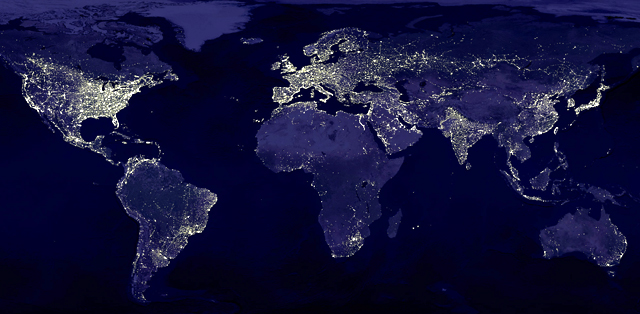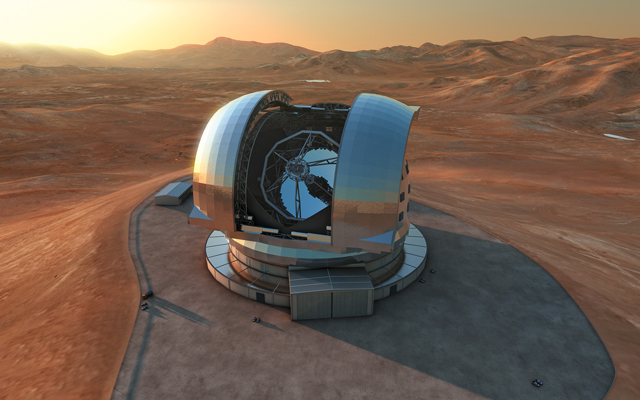Treading Softly in a Connected World

Gene Stanley never walks down stairs without holding the handrail. For a fit 71-year-old, he is deathly afraid of breaking his hip. In the elderly, such breaks can trigger fatal complications, and Stanley, a professor of physics at Boston University, thinks he knows why.
“Everything depends on everything else,” he said.
Three years ago, Stanley and his colleagues discovered the mathematics behind what he calls “the extreme fragility of interdependency.” In a system of interconnected networks like the economy, city infrastructure or the human body, their model indicates that a small outage in one network can cascade through the entire system, touching off a sudden, catastrophic failure.
First reported in 2010 in the journal Nature, the finding spawned more than 200 related studies, including analyses of the nationwide blackout in Italy in 2003, the global food-price crisis of 2007 and 2008, and the “flash crash” of the United States stock market on May 6, 2010.
“In isolated networks, a little damage will only lead to a little more,” said Shlomo Havlin, a physicist at Bar-Ilan University in Israel who co-authored the 2010 paper. “Now we know that because of dependency between networks, you can have an abrupt collapse.”
While scientists remain cautious about using the results of simplified mathematical models to reengineer real-world systems, some recommendations are beginning to emerge. Based on data-driven refinements, new models suggest interconnected networks should have backups, mechanisms for severing their connections in times of crisis, and stricter regulations to forestall widespread failure.
“There’s hopefully some sweet spot where you benefit from all the things that networks of networks bring you without being overwhelmed by risk,” said Raissa D’Souza, a complex systems theorist at the University of California, Davis.
To understand the vulnerability in having nodes in one network depend on nodes in another, consider the “smart grid,” an infrastructure system in which power stations are controlled by a telecommunications network that in turn requires power from the network of stations. In isolation, removing a few nodes from either network would do little harm, because signals could route around the outage and reach most of the remaining nodes. But in coupled networks, downed nodes in one automatically knock out dependent nodes in the other, which knock out other dependent nodes in the first, and so on. Scientists model this cascading process by calculating the size of the largest cluster of connected nodes in each network, where the answer depends on the size of the largest cluster in the other network. With the clusters interrelated in this way, a decrease in the size of one of them sets off a back-and-forth cascade of shrinking clusters.
When damage to a system reaches a “critical point,” Stanley, Havlin and their colleagues find that the failure of one more node drops all the network clusters to zero, instantly killing connectivity throughout the system. This critical point will vary depending on a system’s architecture. In one of the team’s most realistic coupled-network models, an outage of just 8 percent of the nodes in one network — a plausible level of damage in many real systems — brings the system to its critical point. “The fragility that’s implied by this interdependency is very frightening,” Stanley said.
However, in another model recently studied by D’Souza and her colleagues, sparse links between separate networks actually help suppress large-scale cascades, demonstrating that network models are not one-size-fits-all. To assess the behavior of smart grids, financial markets, transportation systems and other real interdependent networks, “we have to start from the data-driven, engineered world and come up with the mathematical models that capture the real systems instead of using models because they are pretty and analytically tractable,” D’Souza said.
In a series of papers in the March issue of Nature Physics, economists and physicists used the science of interconnected networks to pinpoint risk within the financial system. In one study, an interdisciplinary group of researchers including the Nobel Prize-winning economist Joseph Stiglitz found inherent instabilities within the highly complex, multitrillion-dollar derivatives market and suggested regulations that could help stabilize it.
Irena Vodenska, a professor of finance at Boston University who collaborates with Stanley, custom-fit a coupled network model around data from the 2008 financial crisis. Her and her colleagues’ analysis, published in February in Scientific Reports, showed that modeling the financial system as a network of two networks — banks and bank assets, where each bank is linked to the assets it held in 2007 — correctly predicted which banks would fail 78 percent of the time.
“We consider this model as potentially useful for systemic risk stress testing for financial systems,” said Vodenska, whose research is financially supported by the European Union’s Forecasting Financial Crisis program. As globalization further entangles financial networks, she said, regulatory agencies must monitor “sources of contagion” —concentrations in certain assets, for example — before they can cause epidemics of failure. To identify these sources, “it’s imperative to think in the sense of networks of networks,” she said.
Scientists are applying similar thinking to infrastructure assessment. Leonardo Dueñas-Osorio, a civil engineer at Rice University, is analyzing how lifeline systems responded to recent natural disasters. When an 8.8-magnitude earthquake struck Chile in 2010, for example, most of the power grid was restored after just two days, aiding emergency workers. The swift recovery, Dueñas-Osorio’s research suggests, occurred because Chile’s power stations immediately decoupled from the centralized telecommunications system that usually controlled the flow of electricity through the grid, but which was down in some areas. Power stations were operated locally until the damage in other parts of the system subsided.
“After an abnormal event, the majority of the detrimental effects occur in the very first cycles of mutual interaction,” said Dueñas-Osorio, who is also studying New York City’s response to Hurricane Sandy last October. “So when something goes wrong, we need to have the ability to decouple networks to prevent the back-and-forth effects between them.”
D’Souza and Dueñas-Osorio are collaborating to build accurate models of infrastructure systems in Houston, Memphis and other American cities in order to identify system weaknesses. “Models are useful for helping us explore alternative configurations that could be more effective,” Dueñas-Osorio explained. And as interdependency between networks naturally increases in many places, “we can model that higher integration and see what happens.”
Scientists are also looking to their models for answers on how to fix systems when they fail. “We are in the process of studying what is the optimal way to recover a network,” Havlin said. “When networks fail, which node do you fix first?”
The hope is that networks of networks might be unexpectedly resilient for the same reason that they are vulnerable. As Dueñas-Osorio put it, “By making strategic improvements, can we have what amounts to positive cascades, where a small improvement propagates much larger benefits?”
These open questions have the attention of governments around the world. In the U.S., the Defense Threat Reduction Agency, an organization tasked with safeguarding national infrastructure against weapons of mass destruction, considers the study of interdependent networks its “top mission priority” in the category of basic research. Some defense applications have emerged already, such as a new design for electrical network systems at military bases. But much of the research aims at sorting through the mathematical subtleties of network interaction.
“We’re not yet at the ‘let’s engineer the Internet differently’ level,” said Robin Burk, an information scientist and former DTRA program manager who led the agency’s focus on interdependent networks research. “A fair amount of it is still basic science — desperately needed science.”
This article was reprinted on Wired.com.



